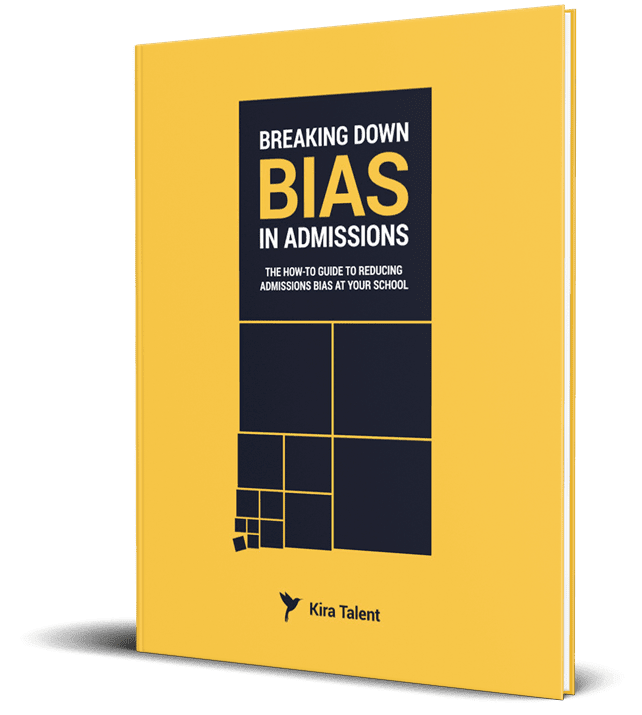The new report, “Defining Access: How Test-Optional Works,” published by the National Association of College Admission Counseling (NACAC) analyzed data from 955,774 applicants from admissions to graduation.
Approximately one-quarter of the students in the study did not submit test scores in their applications. Students who chose not to submit scores performed as well, if not slightly better, than their peers who included test scores in their applications.
These findings challenge the idea that standardized tests are key to gauging students’ success potential in college or university.
The report indicates that test-optional policies positively contribute to campus diversity: Nearly half of students who did not submit scores, and who enrolled, (42%) were underrepresented minority, first-generation, or Pell grant students, versus 32% of the students who submitted scores.
Critics of required standardized testing have argued that tests disadvantage students from low-income families because of the cost and time required for test prep.
Report Highlights
- All institutions saw an application increase. When matched with a test-requiring peer school, for the sake of comparison, just over half of test-optional schools saw greater application growth than their test-requiring peer school.
- All but one of the institutions experienced an increase in underrepresented minority applications after test-optional policy adoption.
- Students who do not submit test scores (non-submitters) were often admitted at lower rates than submitters; However, these students yielded at substantially higher rates.
- Underrepresented minority students, first-generation, and Pell grant students were more likely than others not to submit.
- Female applicants were non-submitters at higher rates than male applicants.
- Although non-submitters’ first-year grades were slightly lower than students who submitted scores, the students ended up highly successful and graduated at equivalent rates to their peers.
- At some institutions, non-submitters graduated at slightly higher rates than those who did submit.
- In a small sample of non-submitters who shared their test scores with the research group, high school GPA had a stronger correlation with college success for non-submitters than the ACT/SAT.
- Non-submitters, overall, had higher financial need requirements than students who submitted scores.
Testing Debates Continue in Legal Education
Although this particular study published by NACAC is focused on four-year colleges, it’s relevant to note that the American Bar Association (ABA), just last week, also stated that ABA-accredited law schools may no longer require the LSAT.
While another test, such as the GRE, would likely still be required, the potential movement away from one specific testing standard across legal education is a big step. Several law schools, including University of Arizona, Harvard, and Northwestern, have already dropped the LSAT from their admissions requirements.
"This recommendation recognizes that a one-size-fits-all admissions approach prevents law schools from opening their doors to the widest pool of students capable of success in law school and on the bar. By focusing more on the quality and outcomes of legal education instead of mandating the use of specific measures of potential that are incomplete at best, law schools will be in line with other professional schools and can better serve students and the profession by admitting and educating capable candidates with broad backgrounds and qualifications,” Marc Miller, dean of the University of Arizona’s James E. Rogers College of Law, said in a statement on the university’s website.
Testing Providers Are Adapting to Compete
All of this to say, test providers are not going anywhere, either. On the contrary, most major admissions tests are adapting and responding to the test-optional movement.
In 2015, Educational Testing Service (ETS) released its SuccessNavigator® product to help schools better assess at-risk incoming students. ETS also has released a number of its test prep products for free as well as fee reduction guidelines for low-income students writing the GRE.
The SAT was completely revamped in 2016 with aims to be a more “relevant and affordable” exam. And, just a few weeks ago, in 2018, the GMAT announced their exam would be 30 minutes shorter to provide a better test-taking experience.
The College Board, likewise, has developing research indicating that standardized testing, when combined with contextual information about applicants’ high schools, can improve admissions rates for low-income students and racial minorities.
Rebecca Zwick, a senior researcher at Educational Testing Service (ETS) and professor emerita at the University of California, Santa Barbara, argues that grades alone are too unreliable due to the lack of consistency between grading standards among different countries, states, school boards or even teachers. Testing, Zwick argues, can also help identify students who are smart but have been unsuccessful in school for a variety of reasons unrelated to their abilities.
For more on this topic: Lessons from Eliminating the Standardized Test Requirement at Hampshire College



